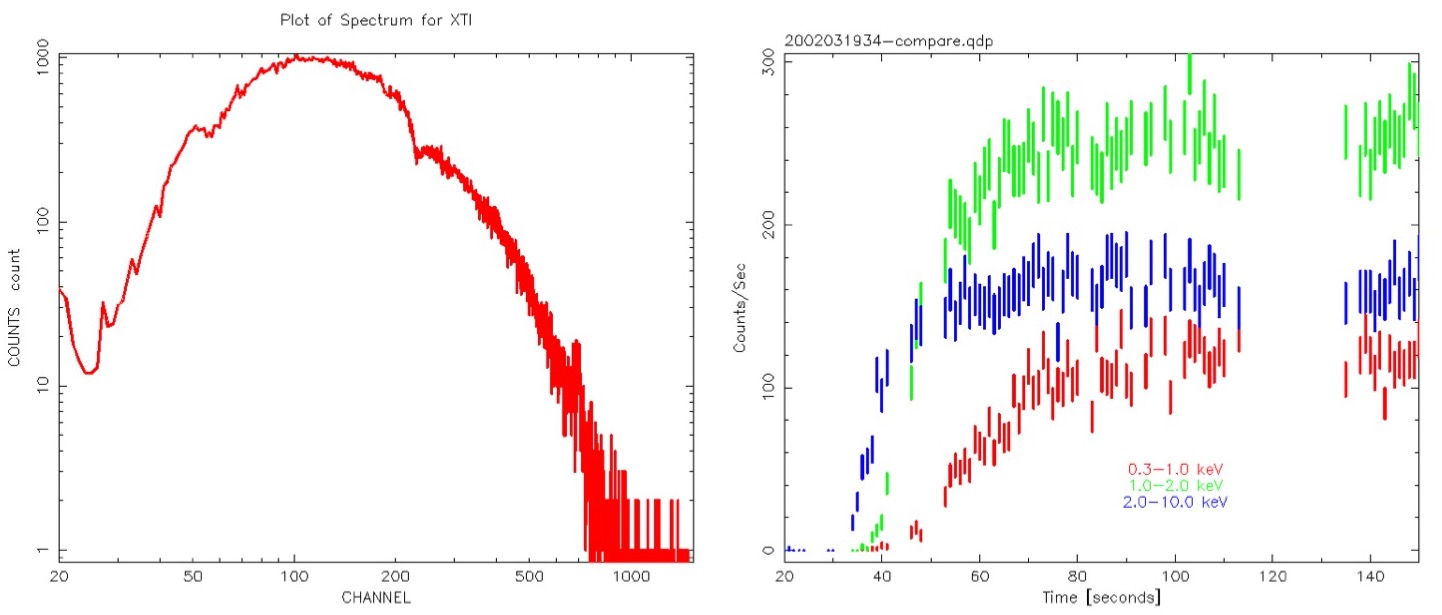NICER / ISS Science Nugget
for February 6, 2020
Earth's shadow provides viewing window for V4641 Sgr
V4641 Sgr is a black-hole binary system that consists of a 6.4 Solar mass black hole and a 2.9 Solar mass companion star in a
2.8 day orbit about 20,000 light years away. In January, the ISS payload MAXI detected increased X-ray activity from V4641
Sgr that suggested a new outburst. NICER executed a target of opportunity (TOO) observation of V4641 Sgr, which confirmed the
outburst over the past few days and was reported in an Astronomer's Telegram (ATel #13443) by Altamirano et al.
This TOO observation was more technically challenging than most because the target was within NICER's Sun avoidance angle of
45 degrees, which NICER maintains to avoid excess optical loading and electronic noise. To execute this TOO, NICER made use
of the shadow of the Earth, blocking the Sun as V4641 Sgr rose above the Earth's limb. This afforded a few minutes of time
as the ISS was in darkness and the target was visible. The resulting data yielded the X-ray spectrum shown in the figure.

Figure:
(Left) The X-ray spectrum captured by NICER of V4641 Sgr during a TOO observation on Feb 3, 2020, shows a spectrum
consistent with accretion of matter onto a black hole, including an iron K emission line around 6 keV. (Right) The light
curves in 3 X-ray bands as V4643 Sgr rose above the Earth's limb. The Earth's atmosphere becomes more transparent as V4641
Sgr gets higher above the limb. More penetrating high energy X-rays (blue) are seen to rise first followed by moderate
energy (green) and low energy (red) X-rays due to absorption in the atmosphere. This energy dependence offers the ability to
do some atmospheric science with NICER, effectively "X-raying" the atmosphere's density profile.
As a side benefit of this TOO and the method used to execute it, NICER was able to demonstrate a new on-orbit navigation tool
by timing the crossing of V4641 Sgr across the Earth's horizon. Combined with other navigation techniques, including
pulsar-based navigation demonstrated by NICER in 2017 and 2018, horizon crossing measurements of celestial objects in the
X-ray band can provide precise navigation solutions independent of standard methods. The figure shows the light curves
(brightness) in 3 X-ray energy ranges as V4641 Sgr rose above the Earth's limb.
The horizon-crossing result was reported in a
talk earlier this week at the 43rd Annual American Astronautical Society Guidance, Navigation and Control Conference in
Breckenridge, CO, by Kent Wood of the NICER team.
<< Previous
Main Index
Next >>